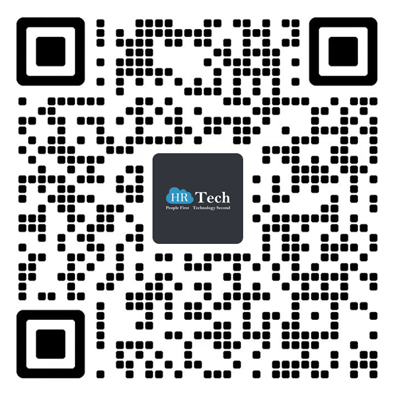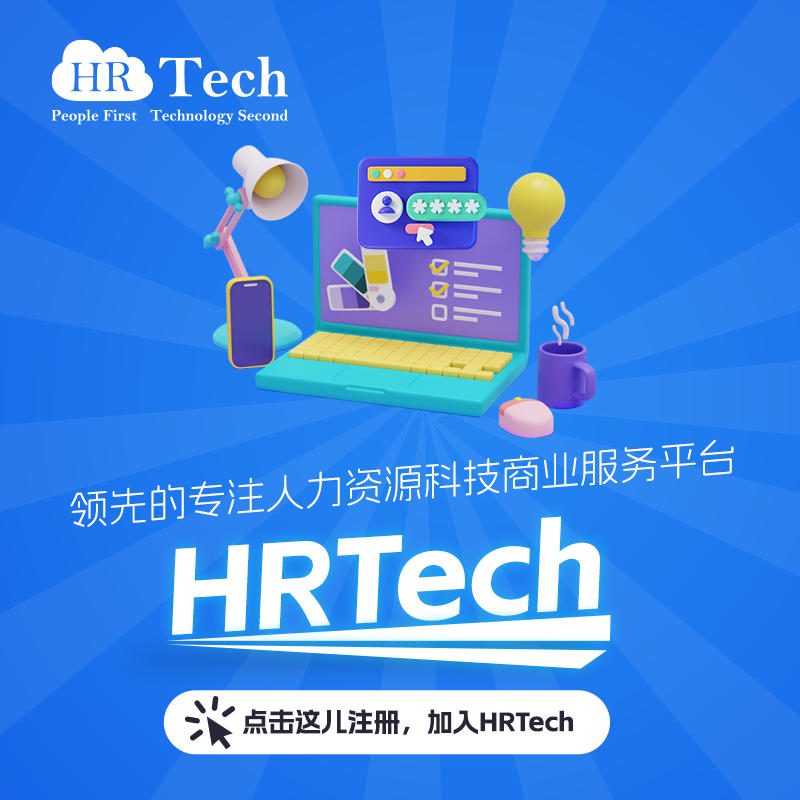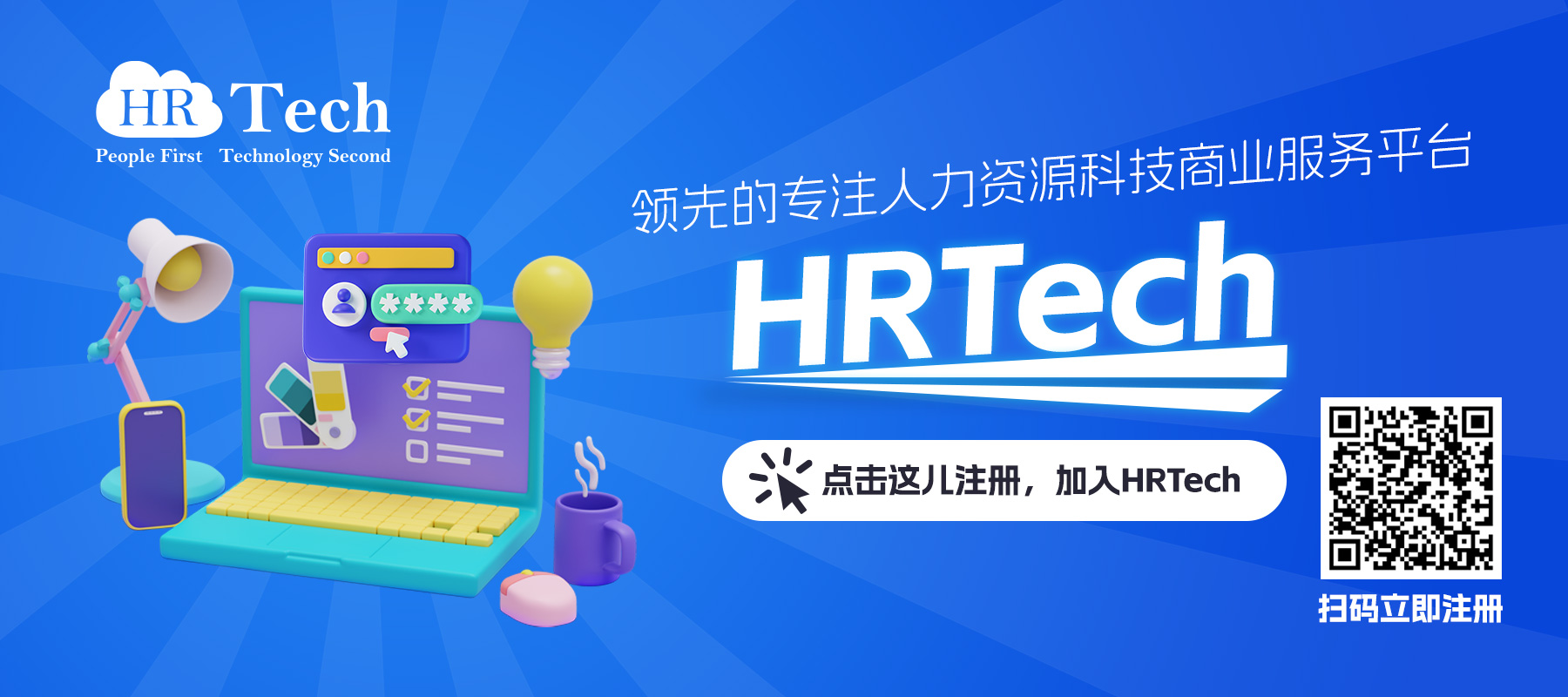-
 Future of Work
Future of Work
技术如何帮助人力资源流程在2019年与战略联系起来
文/Chiradeep BasuMallick
随着2019年全球各地的公司为竞争激烈且快速发展的人才市场做准备,人力资源将成为主要的差异化因素。我们分享最新的技术进步如何帮助将人力资源流程与业务战略联系起来,为雇主提供真正的优势。
技术正在从人力资源流程中汲取“人为因素”,这是一个普遍的观点。然而,现实往往恰恰相反:从雇用更多样化和注重结果的人才库到连接和参与全球分散的团队,在许多方面,技术正在改善员工的体验。
例如,考虑一个人才获取领导者使用AI来改进招聘方法。乍一看,人工智能似乎会“去人化”候选人的体验,引入一定程度的标准化。但技术实际上可以用于将人力资源流程与组织层面的战略联系起来。根据我们的示例,AI可以帮助招聘团队继续投诉非偏见协议,增加数量并减少错误频率。
现在让我们看一下技术如何帮助人力资源流程与2019年的战略保持一致:
人力资源自动化将让您为人类互动腾出时间
最终,人与人之间的联系是决策者的首要任务; 尖端技术正在帮助将人力资源流程与员工参与和参与的战略联系起来。
全体人力资源专业人士一致认为,他们正在被迭代的常规工作负载所占据,而更多的战略计划被推迟。在这种环境下,人力资源技术不仅仅是人类努力的替代品; 但是在招聘/员工期望与人力资源能力之间存在持续差距的桥梁。
事实上,这将释放人力资源,以加强他们对更具战略性举措的关注。
首先要了解哪些任务会妨碍个性化和卓越绩效,这是谨慎的做法。这可以作为列出要实现自动化的角色以及可以通过技术应用程序解决的角色的可靠指南,以便员工可以将人力资源工作重新分配给战略性工作,例如高级招聘,保留措施等。
HR Tech将提供关键绩效领域的信息
采用典型年度反馈周期的雇主可能会失去员工即时且真正相关的见解。如果没有这些信息,公司将难以确定改进领域并绘制未来增长路径。
由持续数据捕获功能提供支持的尖端员工反馈工具可以帮助将此人力资源流程与战略目标联系起来。这也可以成为年度审核周期的明智选择:在立即适用时提供建设性的绩效评估,并获得员工对组织/流程经理/人力资源领导者可以采取的不同做法的回应。值得注意的是,将人力资源流程与员工/组织绩效战略联系起来,将涵盖福利,下班后活动,办公环境和其他重要参数。
Culture Amp的首席执行官兼创始人Didier Elzinga 解释了传统反馈机制面临的挑战以及HR技术变得越来越重要的原因:
“当整个领导人说他们关心员工反馈以使参与率达到90年代高,然后六个月内没有人听到任何东西时,会导致整个问题的杀戮。即便如此,通常只有实际看到报告的人才是管理团队中的一小部分人。所有那些不遗余力地给你反馈意见的人都在疑惑,“发生了什么事?人们怎么说?你在做什么呢?' 没人知道。
实时反馈的力量在于它消除了所有摩擦力。调查结束时,您可以与每个人分享结果。我们的一些公司实际上与员工中的每个人分享。“
HR Tech将帮助连接各地的员工
对于以增长为重点的雇主来说,利用广泛而多样化的人才库一直是企业的当务之急。现在,通过提供最先进的移动工具,技术可以帮助将人力资源流程与全球招聘和劳动力管理相关联的战略联系起来。这可以包括视频/音频会议技术,通信平台和协作套件等。
“汇集分布式远程员工以解决组织最紧迫问题的想法是吸引员工的事情,结果可以提高组织的效率,并可以推动业务内其他垂直行业的创新,” Adobe的Lisa Croft 认为。
定期提到远程工作是现代组织的首要任务,技术对于将人力资源流程与2019年战略远程工作者参与计划联系起来至关重要。
人力资源将变得个性化,促进参与和忠诚度
如今,员工不再满足于“一刀切”的方法,并且不断寻求在任何工作岗位上的差异化体验。技术可以帮助将人力资源流程与员工生涯的战略关系联系起来,从招聘到离职。
“从员工的第一次微笑到最后的告别,以及中间的所有里程碑和假期,员工服务管理为所有员工/人力资源互动提供了一种有组织的方法,” 再次确认帮助台解决方案公司人员高级总监Karen Clark ,萨曼奇。
例如,人力资源分析可以利用跨多个接触点收集的数据来帮助个性化各种场景,包括识别,学习和开发,福利计划等。换句话说,人力资源经理可以利用技术驱动的信息库将人力资源流程与战略要求联系起来,例如激励上升,绩效重新布线和领导力发展。
结语
这四个改变游戏规则的趋势表明,技术将如何帮助将人力资源流程与2019年及以后的战略目标联系起来。请记住,技术不仅仅是人类人力资源工作的“替代”; 事实上,下一代人力资源工具将通过最大限度地提高员工潜力和扩大招聘效率来帮助实现一系列业务目标。
您是否正在利用数字解决方案将人力资源流程与您组织的战略目标联系起来?加入讨论,并在下面的评论中分享您的想法。
以上为AI翻译,内容仅供参考。
原文链接:技术如何帮助人力资源流程在2019年与战略联系起来
Future of Work
2019年01月11日
-
 Future of Work
Future of Work
人力资源技术专家将来需要的4项基本技能
文/Dave Weisbeck
今天的人力资源技术专家是一个技术性很强的角色,正面临越来越大的压力,需要继续破坏并对组织的底线产生更大的影响。传统上,人力资源技术的重点一直是卓越运营 - 管理和优化我们用于运行人力资源的流程。随着我们的进步,人力资源技术专家将需要专注于更好地整合技术和人员,以便设计一个改进的工作系统 - 业务如何通过其人员发挥作用。这一角色对整个企业的成功至关重要,因为它将成为企业在竞争中脱颖而出的基本手段。
那些利用技术,人工智能和数据方面即将到来的优势的人,与那些停滞在创新上的人相比,收益将呈指数级增长。人力资源技术人员现在必须采取措施,确保他们拥有必要的技能,以确保在决策速度和质量至关重要的未来取得成功。
随着行业的发展,这些将是人力资源技术人员必须具备的基本技能:
将人力资源决策与业务成果联系起来
技术投资越来越多地通过批判性的视角进行审查,对于CHRO和首席执行官来说,总体业务影响和财务目标是最重要的。人力资源技术专家的核心重点将不再局限于人力资源和人力资源规划,而是这些力量对整个组织的影响。
缺乏远见和商业头脑会伤害任何商业领袖,包括人力资源技术领域的领导者。如果您不知道为何做出业务决策,则无法将人力资源决策与业务成果联系起来。人力资源技术专家不再能够成为各自领域的专家,他们必须精通组织的健康状况,并了解决策如何影响整个系统。
基于数据的推理与创新
每天,我们都在制作越来越复杂的数据,以便从中获取见解。我们实施的用于雇用,船上,开发,保留,补偿等的所有流程都创建了大量数据。但这只是一个开始。考虑物联网,它通过监控自动室内灯光激活来跟踪从办公室空调的温度到员工流动的所有内容。人力资源技术专家需要找到新颖的方法来有效地汇集和解释这些信息。能够从越来越大和更复杂的数据集中提取最重要的细节以做出明智的决策将对业务产生战略价值。
更具体地说,掌握人员分析并使用预测模型来改进人力规划并随着业务和市场的变化定期更新这些计划至关重要。人力资源技术专家不再能够简单地回答诸如“当前员工人数是多少?”或“上个月雇佣了多少人?”等问题。相反,需要更先进地调查员工如何不断适应和改进到加强业务成果。
将提出深刻的问题,其结果将改变工作的性质,领导层将寻求人力资源技术专家根据事实和数据提供创新的想法。
社会情报
人力资源部门经常关注个人,正如我们在考虑招聘,绩效,发展或薪酬时做出决策所证明的那样。当团队(团队内部和团队团队)的动态得到优化时,企业的运作效果最佳。但技术不断改变协作的本质,而且远程工作人员比以往任何时候都多。即使在今天,有效的合作也不再受办公室或城市限制的约束。虚拟通信工具将继续使面对面的交互更加普遍,并且面对屏幕的时间将占主导地位。
人力资源技术专家必须了解哪些策略最适合参与和激励全球和几乎分散的团队,并能够衡量团队的运作和互操作程度。在单个团队或职能中发生的业务流程很少,并且可以通过改进团队的互操作性来获得关键业务优势。人力资源技术专家不需要将决策权交给IT,而是需要成为关键的利益相关者 - 并将数据 - 用于新通信或协作技术的决策。
此外,在机器和算法将成为劳动力一部分的世界中,对社会智能的深刻理解将成为有效实施和衡量这些新技术如何与人们融合的竞争优势。
解决创造性问题
随着未来变化如此迅速,需要创造力和好奇心态来为复杂的业务问题找到合适的解决方案。深入研究数据的意愿必须与创造性方法相结合,以收集所需的所有信息,无论是调查利益相关者,使用最新软件,还是开发新的机器学习算法。
能够开箱即用并提出创新建议的人力资源技术人员对推动业务发展至关重要。
此外,这些相同的技能可以应用于变革管理,这将继续成为关键的成功因素。向工作场所引入任何新技术都有障碍,因此能够找到最佳路径需要创造性思维和健康的好奇心。创造性思维将提供一个计划,该计划将尽可能减少对团队,员工和业务的干扰。
为未来做好准备对于人力资源技术专家来说至关重要,不仅要保持相关性,还要展示他们的角色在组织中发挥的重大影响。通过现在思考,有机会掌握所有变化,巩固您现在和将来的价值。
以上为AI翻译,内容仅供参考。
原文链接:4 Essential Skills an HR Technologist Will Need for the Future
Future of Work
2019年01月11日
-
 Future of Work
Future of Work
Gartner:人力资源数字化是首席人力资源官的首要任务
Gartner公司表示,企业领导者正在寻求数字化以创造更高绩效的员工队伍,因此人力资源数字化是今年首席人力资源官(CHROs)的首要任务。数字化人力资源领先于其他重要优先事项,如绩效管理和创建人员分析团队。
“首席执行官正在寻求人力资源职能部门,以推动数字化转型工作,并加强整个组织的创新,” Gartner人力资源业务集团副总裁Brian Kropp表示。“能够使其正确并且能够提高创新效率的组织可以将每位员工的年收入提高多达8,800美元。”
数字时代的人才战略
人力资源和商业领袖正在争论的一个经常而重要的问题是,最好是“购买或建立”数字人才。也就是说,如果人力资源部门不在组织之外寻找新的候选人,或者公司应该培养现有的员工。Gartner的研究发现,公司应该继续做到这两点,但是,这些策略本身并不能帮助他们实现数字化转型目标。组织还必须从内部改变公司,以实现数字创新。
建立基于网络的创新文化
领先的组织认识到,吸引和留住人才的标准做法不足以促进创新文化。Gartner的研究发现,更广泛,更基于网络的培养创新方法可以实现最佳结果,而不是围绕建立创新个人或创新团队的战略。
Kropp先生补充说:“基于个人或团队的创新战略只是略微提高了创新效率,因为他们通常只涉及积极参与的员工太少,或者缺乏领导力创新思想的动力。”
为了建立基于网络的创新文化,Gartner确定了三个主要战略:
让员工超越创意阶段。让员工更多地了解和掌握所追求的想法,确保更多员工积极参与公司的创新。
将领导心态转变为共同而非个人的风险承担。人力资源部门应该帮助职能领导者协作,以更深入地了解如何采取更好的数字化动机风险和机会。
为员工提供更多的指导,而不是更多的访问,使用网络进行创新。人力资源领导者可以通过考虑创意如何在他们的组织中发挥作用,为员工提供一个新的前景 - 超越正式结构 - 以及如何推动创意,从而获得动力和保持动力。
以上为AI翻译,内容仅供参考。
原文链接:Gartner表示,人力资源数字化是首席人力资源官的首要任务
Future of Work
2019年01月10日
-
 Future of Work
Future of Work
推动网络创新:人力资源在推动数字化转型中的作用
文/Brian Kropp
数字转型正以前所未有的速度进行。世界各地各行各业的企业都在“数字化”上投入了比以往更多的时间、精力和资源。高德纳(Gartner)最近的研究显示,数字化是近90%的企业领导人的首要任务,预计2019年全球企业将在数字化转型上投入近1.7万亿美元。
总体而言,人们的看法是,忽视在数字化方面投入努力和资源的企业将会后悔——67%的企业领导人认为,为了保持竞争力,他们的公司必须在2020年前实现显著的数字化。
企业拥抱数字化的迫切需求为人力资源领导者提供了丰富的机遇:作为数字人才进入组织的门户,他们的决策对任何企业的数字化转型都至关重要。那么,他们如何才能取得最佳进展呢?
人力资源领导者面临的任务
随着企业努力实现数字化,首席执行官们在这方面对首席人力资源官(CHRO)提出了更高的要求。在一项针对30位首席执行官的民意调查中,CHROs前进的三大要求是:
吸引、发展和留住数字人才,支持数字战略
帮助领导者改变他们对数字战略的人才影响的思维模式
帮助促进或培训员工适应数字变化
在寻求吸引、发展和留住数字人才时,人力资源领导者目前面临两种行动方案:要么从头开始培养人才,要么从外部购买。对于大多数人力资源决策者来说,在现有的领导者和员工中发展数字专业知识是最具吸引力的选择。高德纳(Gartner)的进一步研究显示,接受调查的人力资源领导者中有95%计划加大对员工的培训力度,以获得数字化机遇,而63%的人指出,他们正在开发专注于数字化管理的新领导力项目。
尽管如此,大多数受访者也认识到需要从外部购买数字人才,74%的受访领导者表示,他们将从公司外部招聘具备编码或数据分析等专业技能的员工。
此外,试图改变周围领导者思维模式的CHROs似乎也从外部招聘中找到了安慰:实际上,54%的CHROs正在招聘有管理企业经验的高级领导者,以解决这个问题。
数字人才聚焦
这些数据表明,人力资源主管目前正努力寻找数字人才。但是他们的努力有多成功呢?还有更好的方式为CHROs铺平数字化道路吗?
由于种种原因,数字人才越来越难以吸引、培养和留住。这个问题很复杂,过去几年,数字劳动力市场经历了一段剧烈动荡和变化的时期。举例来说,自2013年以来,大多数技术类工作的技能要求变化了25%以上。对数字人才的需求远远超过了供应,这一事实加大了人力资源部门试图“跟上”数字人才的难度;因此,这样的人才是昂贵的,数据科学家的平均工资几乎是拥有高等学位的普通员工的两倍。
在这种不适应的市场环境中——对数字人才的竞争十分激烈,技能的保质期似乎每年都在缩短——CHROs需要考虑的不仅仅是“数字人才”,这一点正变得越来越明显。
CEO们真正想要的是:创新
首席执行官们越来越多地希望,他们的人力资源主管不仅要招聘数字人才,还要全面推动整个行业的数字进步,利用先进数据分析和增强现实等技术进步带来的增长机遇。从根本上说,CHRO的职权范围已经扩大。他们不再是人才和报酬的监督者;未来的人力资源领导者将是创新的捍卫者。
与劳动力市场一样,创新在当今数字时代也在迅速变化。至关重要的是,速度正在成为这个领域成功的标志:在“赢者通吃”的环境中,成功的组织必须比周围的组织更快地识别、确定优先级并实施创新。此外,仅仅改进现有业务的创新解决方案是不够的,它们还必须能够破坏和创造新的机会。这种趋势的一个例子可能是多米诺的“热点”理念,允许顾客在户外把披萨送到他们手中;还有金融技术挑战者Revolut消除汇率高企的能力,几乎所有消费者在出国旅行时都要面对这种情况。
要在当今快速技术变革的环境中取得真正的成功,组织必须能够动员其全体员工来全面推动创新。
网络创新方法
正如Gartner在其网络研讨会“推动网络创新:数字时代的人才战略”中所详述的那样,最有效的创新战略是那些采取“网络创新”方式的战略,即建立并利用包括各级员工和领导者在内的专业知识网络,进行大规模创新。
制定网络创新方法的主要策略包括:
员工参与不仅要筛选,还能产生想法。
为共同承担风险而非个人承担风险的领导者提供装备。
为员工使用创新网络提供更多的指导,而不是更多的机会访问。
以上为AI翻译,内容仅供参考。
原文链接:Driving network innovation: The role of HR in driving digital transformation
Future of Work
2019年01月10日
-
 Future of Work
Future of Work
2019年实施人力资源技术的4个理由
文/JEN MCKENZIE
长期以来,技术恐惧症患者一直担心技术会抢走工作。然而,事实是,技术实际上并没有夺走工作岗位,而是让企业有能力用同样数量的工人做更多的事情。事实上,技术投资实际上可以帮助增加收入,这让企业有能力雇佣更多的员工,而不必裁员。人力资源技术可以通过不断发展的企业加以利用,尤其是发展和加强他们的实践,成本往往很低。Sierra-Cedar的数据显示,今年,45%的大公司和51%的中型公司表示,它们计划增加在人力资源技术方面的支出。这里有4个你也应该这么做的理由。
设计一个有效的招聘流程
寻找和招聘新员工是人力资源代表必须完成的最费力、最耗时的任务之一——尤其是如果他们没有有效地做到这一点的话。如果他们第一次找不到合适的人,他们只需要一次又一次地找,直到找到合适的人。然而,找到合适的人选可能是一项挑战,因为事实上,传统的筛选方法在做出如此重要的决定之前,给你提供的关于候选人的信息非常少。
当你真正需要360度全方位的视角时,简历甚至面试只会让你对一个人的全部潜力有一个大致的了解。个人偏见在招聘和招聘过程中也总是扮演着重要的角色,无论我们如何努力去识别和消除它们。然而,机器学习和人工智能可以帮助克服这些问题中的任何一个。人工智能可以根据求职者的气质和技能来筛选他们,从而找到既具备技能又具备适合你的企业文化特征的候选人。
通过自动执行重复性任务节省资金
1975年,尽管学费低,生活成本低,但只有1000多万学生入读大学。2018年,尽管学费上涨,毕业生的平均债务负担为40,000美元,但仍有超过2000万名学生入读大学。到2025年,千禧一代将占劳动力的75%以上,超过50%的人表示会减薪以寻找符合其价值观的工作。90%的人希望善用自己的技能。
不幸的是,虽然56%的千禧一代认为一个人应该在一家公司工作超过20年,而且最近Bridge调查中有90%的受访者表示他们希望在现有公司中发展自己的职业生涯,Nintex的一项研究表明, 53%的受访者表示,由于流程破碎,他们预计不会留在公司超过五年。这是什么意思呢?这意味着没有人愿意花费超过40,000美元用于教育,只是为了每天都能做猴子可以做的工作。自动化流程不仅可以节省时间和金钱,还可以让您的员工摆脱盲目的任务,专注于重要的项目。
提供数字员工培训
员工们不希望做的是没完没了的、猴子能做的、不用动脑筋的事情。他们真正想做的是不断地学习、成长和发展。事实上,德勤(Deloitte) 2015年的千禧一代(millennium)调查发现,在来自29个不同国家的7800名未来领导者中,只有28%的人认为他们目前的组织在充分利用他们的技能。
虽然大多数千禧一代是伴随着某种形式的技术成长起来的,但只有36%的千禧一代和29%的Z一代认为他们拥有在蓬勃发展的工业4.0世界中茁壮成长所需的技能和知识。尽管受访者当然有兴趣继续培养自己的技术技能,但他们更担心的是缺乏培养人际交往能力、培养更多自信和从事道德行为方面的培训——他们认为这些都是企业成功的要素。
提高员工的工作效率和满意度
技术不仅可以帮助您更好地教育和培训您的员工,为他们的进步做好准备,还可以帮助您更好地管理他们的进步。对于一名员工来说,没有什么比花时间和精力去学习一项新技能却没有得到充分的利用和认可更令人沮丧的了。
现代人力资源工具能够帮助管理者有效地分析和预测员工的需求,并更有效地跟踪工作进展,从而显著提高工作效率和整体工作满意度。技术可以帮助经理们更好地识别出那些在其他情况下可能会被忽略的、默默无闻、始终如一的明星员工,也可以让员工自己挑出自己的同事来表扬。
与许多技术恐惧症患者的担忧相反,技术实际上并不会夺走工作。它所要做的就是承担那些让人感到沮丧、重复、无聊甚至危险的任务。这可以解放人类去做他们最擅长的事情:互动、设计、创造和创新。但前提是企业有效地利用技术,帮助它们更好地管理资源。招聘可能是人力资源部门执行的最重要、最耗时的任务之一,但如果你不能很好地管理人力资源,招聘(一遍又一遍)就是你要做的所有事情。
以上为AI翻译,内容仅供参考。
原文链接:4 Reasons to Implement HR Technology in 2019
Future of Work
2019年01月09日
-
 Future of Work
Future of Work
2019年HR需要关注的转变趋势
文/Diana Coker
美国研究公司Forrester对2019年的预测显示,这一年将伴随着许多业务转型。Forrester警告说,考虑到技术的快速发展,许多工作场所的创新将出现在商业领域。伴随这些创新而来的是处理它们的挑战。组织准备、老化的品牌、数据治理和技术债务将是业务必须处理的几个挑战之一。
应对这些挑战首先需要HR们了解2019年的基本转变趋势。当这些问题得到确认并从理论上加以处理时,就会为2019年的成功奠定更有力和更可靠的基础。
以下是2019年HR必须密切关注的三大转变趋势:
机器人重塑人才管理
自从引进自动化以来,由于对人力的需求有限,人们一直担心失业问题。这种担忧在2019年将进一步加剧。Forrester指出,大约7%的体力劳动岗位将被自动化取代。更大的问题是如何利用自动化的潜力来解决不同领域的技能短缺,这就是人才短缺。为了在2019年解决这个问题,人力资源经理必须推荐机器人商数(RQ)作为数字工作者和同事的重要学习和测量基础。
员工体验(EX)将无效
在新的一年里,大多数企业高管将在管理上做出一些基本的改变。其中一个重大变化将是用有针对性的员工体验(EX)计划取代去年采用的大规模文化变革战略。然而,由于缺乏协调一致的努力,结果将是好坏参半。因此,员工的工作体验不但不会提高,反而会降低。人力资源经理注意到,85%的员工体验测量工作将会失败。
人工智能(AI)奠定了基础
这将是2019年最重要的转变趋势之一。在改善数据治理方面,人工智能将更有效地为企业所用。这将通过使用智能工具来实现,这些工具可以将数据处理转移到更具体的环境和承接状态中。到2019年,超过40%的企业将拥有人工智能和机器人流程自动化(RPA)相结合的数字化员工。因此,对于人工智能将建立的数字化成功的基础,HR们有必要关注、预测和理解人工智能。
2019年将严重影响工作场所发明的趋势将在很大程度上取决于人工智能。从人工智能驱动的招聘,到更先进的数据存储和计算程序,再到人才管理,再到对员工体验的需求减少,2019年对人工技术的期望会更高,人力资源管理人员必须做好在商业中继续发挥作用的准备。
以上为AI翻译,内容仅供参考。
原文链接:Transformation Trends in 2019 HRs Need To Watch
Future of Work
2019年01月08日
-
 Future of Work
Future of Work
2019年劳动力管理趋势
文/Chiradeep BasuMallick
2019年的工作场所将成为一个多元化和充满活力的环境。在全球范围内,无论您的业务规模或行业类型如何,您的员工素质都将直接影响组织的成功。因此,人力资源经理不断改进和强化他们在招聘、聘用和保留员工方面的策略。
除此之外,更大的劳动力管理蓝图还将包括任务安排、薪酬、福利、沟通和其他重要领域。为了成功地涵盖所有这些方面,人力资源经理必须能够管理高度动态的员工队伍和不断变化的员工要求。
为了创建有影响力且面向未来的人力资源战略,以下是2019年应该注意到的七种新兴劳动力管理趋势:
1.工作场所将变得更加协作
通常,工作场所沟通是任何现代企业的重点关注领域。作为一名人力资源经理,您应该鼓励在工作场所进行持续的对话,激发“共同协作的方法”,而不是坚持安静的工作。事实上,雇用小时工的企业比以往任何时候都更需要这样做。
在2019年,诸如电话对话或电子邮件之类的传统通信模型将被在线调度所取代。这些将在平台中嵌入实时消息传递和任务管理。
2.员工敬业度将成为财政危机
人力资源对话始终围绕员工敬业度、兴趣和参与。现在,越来越多的企业意识到员工敬业度可以直接影响他们的业务。高参与度意味着更少的病假,更低的缺勤率,自愿离职率的降低以及最终提高的生产率。
在2019年,人力资源经理将利用这些因素的组合来获得高级管理层的支持,并加大对员工敬业度技术的投入。
“拥有更高员工敬业度的公司的盈利能力提高16%,缺勤率降低37%。这可以将收入提高2.5倍,提高生产率18%。员工敬业度较高的组织也表示营业额减少65%。这些数字说明员工参与的力量,以及提高员工激励和联系的解决方案的必要性,”招聘应用程序首席执行官Linda Ginac说道。
3.劳动力管理将纳入自助服务模块
在日益移动的工作环境中,员工需要最大的便利性和最小的调度协议。仍然采用实际工作时间表和手动考勤工具的公司将面临员工的不满。
简而言之,员工现在可以在网上购物、储蓄、聊天,并主要过上自己的生活。2019年,消费者级别的自助服务体验将成为常态,迫使人力资源经理采用易于使用且适合用户体验的自助服务平台。
4.AI和ML将在幕后工作
2018年人力资源领域的人工智能和基于ML的软件爆炸式增长。从招聘到福利个性化,这些技术可以从大量传入数据中“学习”并产生洞察力。
在2019年,AI和ML将负责大量的劳动力管理任务。具体而言,耗时和迭代的工作(如计划,时间跟踪,审批和工作流程)将变为自动化。
5.传统的劳动力管理技术必须应对代际转移
在过去五年中,千禧一代在公司和组织层面担任领导角色和战略职位。2019年,Z世代的专业人员进入工作场所,为人力资源经理增加了另一层复杂性。另一方面,婴儿潮一代正在迅速退休,这可能导致严重的技能短缺以及领导力挑战。
另一个劳动力管理趋势是,许多婴儿潮一代选择留在65岁以上 - 导致极其多样化和多代的团队。
人力资源经理必须在颠覆性技术部署和无缝传统转型之间保持谨慎平衡,以满足所有这些不同需求。
6.集成将成为劳动力管理应用程序的主要内容
今天,人力资源经理每天都需要执行几乎所有任务的应用程序。但是,在许多情况下,这些应用程序或工具存在于孤岛中,具有用于劳动力管理,工资单,福利等的单独模块。创建集成环境意味着订阅昂贵的套件,例如SuccessFactors或Salesforce。
“对人力资源,L&D和商业技术的合作肯定有兴趣,但人力资源专业人士并不清楚如何实现这一目标。幸运的是,原料药的有用性,普及增长,开放性意味着它比以往任何时候都更快,更简单的实现核心人力资源软件和其他应用程序之间是有用的,完全自动化的集成和数据同步,”CIPHR的CX领导者Rob Oehlers分享了他整合人力资源的理由。
2019年,人力资源创新者将重点关注集成,提供广泛的API库或内置工具,使人力资源经理能够毫不费力地同步不同的功能。
7. 零工经济将获得更大的动力
“根据美国劳工统计局的数据,今天有1650万美国人依靠临时工作,自由职业和按需就业应用来维持生计。虽然50%的千禧一代工人已经是gig经济的一部分,但预计到2027年,如果演出经济继续以目前的速度增长,大多数美国工人将成为演出工人,”总裁兼首席执行官Stefan Midford 说道。在招聘解决方案公司Capango。
由于公司选择自由职业者或合同供应商来提供更大比例的供应服务,劳动力管理工具必须超越直接工资单。人力资源经理将在2019年探索临时劳动力管理解决方案,自由职业招聘应用程序和远程工作人员管理解决方案。
总结
每年,不断变化的员工需求都会重塑并重塑人力资源经理如何处理员工管理。对于2019年而言,精通数字的员工队伍以及不断变化的工作环境将成为战略重新思考的首要决定因素。
密切关注这七项关键劳动力管理趋势的人力资源经理将准备在2019年满足并超越员工的期望。
以上为AI翻译,内容仅供参考。
原文链接:7 Workforce Management Trends for 2019
Future of Work
2019年01月08日
-
 Future of Work
Future of Work
人力资源趋势:2019年的5项人力资源创新
文/Courtney Moran
全球人力资源管理部门预计到2025年将达到300亿美元。换句话说,创造创新的人力资源解决方案的业务正在蓬勃发展。人力资源是一个由专业人士组成的行业,在管理每个员工生命周期的复杂过程中,他们历来负担过重。目前,人力资源行业正在经历着大量的创新。
越来越多的员工希望为公司工作,这些公司提供的不仅仅是公平的工资和通常的福利和津贴。他们希望成为一家多元化公司的一员,这家公司充斥着易于使用的解决方案,这些方案能提高他们的参与度,促进他们的健康,改善他们的工作生活体验。工作场所创新技术的增加反映了向更全面的员工体验的转变。
2019年五大人力资源趋势
所有员工参与
战胜无意识的偏见
改善基本人才培训
扩展我们的健康理念
通过AI简化人力资源运营
1.员工敬业度
预测: 企业将在2019年将员工敬业度增加45%。
员工敬业度是指员工对组织的情感联系、参与和承诺的程度。当员工感到被重视时,他们对工作、同事和公司的奉献精神和热情就会增长。这反过来又增加了员工的保留率、绩效和生产力。
研究一再表明,当员工敬业度低时,公司会受到影响。我们最近调查了人力资源和非人力资源员工,以了解员工敬业度。
我们想知道员工是否根据他们在公司中的角色对参与有不同的看法; 要么他们围绕参与计划做出决策(人力资源员工),要么他们在任何其他领域或部门(非人力资源部门员工)工作,对他们公司如何吸引他们的方式没有真正的发言权。
80%的受访人力资源员工发现,使用人力资源技术提高了员工对公司的态度。与此同时,57%的人力资源员工强烈认为,员工敬业度将有助于公司留住高效员工。总体接受调查的大多数员工认为,员工敬业度对企业文化的繁荣至关重要。当员工投入时,每个人都是赢家。
然而,公司内部的伙伴关系仍然存在脱节。人力资源专业人士声称提供了敬业度解决方案,但许多非人力资源员工仍然不相信他们的公司正在使用这些解决方案,或者他们会提供帮助。我们正处于一个转折点,普通员工希望参与其中,但对于软件如何提供帮助仍持怀疑态度。
人力资源部门、团队和人员负责监督和提供从招聘到离职的全面员工敬业度计划。人力资源人员将越来越多地求助于员工敬业度解决方案,以提高员工敬业度并增加员工保留率。挑战在于决定哪种解决方案最有利于他们的员工、公司和文化。
改善员工敬业度的方法有很多。人力资源人员可以使用员工敬业度软件,收集和跟踪员工的反馈,认可员工的成就,促进积极的活动。这些工具从员工反馈中获得可操作的见解,这对提高敬业度至关重要。
此外,除了员工敬业度软件之外,还有多种解决方案可以帮助员工敬业度。这些解决方案包括提供持续的培训和教育、职业发展、员工认可,以及围绕健康(身体、心理和财务)等主题创建项目。
企业和人力资源员工有很多提高员工敬业度的选择,我们预计企业将在2019年增加对这些解决方案的使用。
2.盲选招聘技术
预测:到2019年,公司将增加对技术的使用,以消除招聘过程中30%的无意识偏见。
对增加多样性以改善全公司绩效和工作场所文化的关注已经在上升。Harvey Nash的一项人力资源调查发现,企业正日益扩大多元化招聘目标,将重点放在性别、种族、文化、年龄和LGBT身份等方面。
然而,在整个简历筛选过程中,隐性或无意识的偏见仍然普遍存在。在最近的一项简历审核研究中,研究人员发现,在简历筛选过程中,种族歧视无处不在。
研究人员发现,名字“听起来像白人”的简历收到面试邀请的几率比名字为亚洲人的简历高75%,比带有“黑听”名字的相同简历高出50%。与此同时,拥有传统男性名字的简历比拥有“听起来女性化”名字的简历更有可能获得面试机会。
尽管这项研究本身受到了一些阻碍,因为它表明,种族和性别被锁定在预先选定的名字中,但它说明了在招聘过程中无意识的偏见可能会如何发挥作用。
我们都知道多元化组织表现得更好。麦肯锡公司(McKinsey & Company)最近的一份报告发现,职场中的性别和种族多样性与利润呈正相关。创造多元化劳动力的最大障碍是要认清自己的偏见,承认它的存在,并采取适当措施减少或更好地从招聘过程中消除这种偏见。
Eventbrite的首席执行官朱莉娅•哈茨(Julia Hartz)将在董事会中实现男女各占一半的比例作为个人目标。最近,他们在10人董事会中加入了倩碧全球品牌总裁简•兰黛(Jane Lauder),实现了性别平衡。哈茨最近告诉《财富》(Fortune)杂志:“自从我创建这家公司以来,我一直有一个强烈的愿望和承诺,那就是打造一个与世界接壤的团队。”
公司将越来越多地设定多元化目标,人力资源人员和招聘经理届时需要实现这些目标。要做到这一点,他们需要从设计实现性别、种族、文化和世代多样性的明确路线图开始。幸运的是,有越来越多的技术解决方案旨在帮助人力资源人员做到这一点。
为了减少招聘过程中性别歧视、种族主义、年龄歧视和阶级歧视的流行,人力资源人员可以实施各种招聘、应聘者筛选、面试和评估工具。今天,公司可以使用的这些解决方案的数量和种类越来越多。
这些解决方案提供了一系列特性,帮助公司实现人才多样化。有些公司提供多样性过滤器,以消除招聘过程中的无意识偏见和被动的候选人来源。例如,多样化的分析可以帮助企业理解并比较他们的公司在多样性方面与竞争对手的排名。此外,一些解决方案侧重于在简历扫描和面试过程中编辑信息,如性别、种族、民族或教育程度,而不是突出工作技能和经验。
人力资源人员将在2019年增加使用盲目招聘技术,以消除整个招聘过程中的无意识偏见。这些解决方案将扩大候选人范围,包括长期被排除在外的合格人才。
3.VR培训预防性骚扰
预测:2019年基于VR的性骚扰培训行业将增长15%。由于交互式、全身临其境的性骚扰培训的增加,性骚扰案件的数量将会减少。
在联邦一级,性骚扰被定义为任何不受欢迎的性行为、性要求或其他身体或语言上的不当行为。
尽管我们发现自己正处于#MeToo运动之中,但Leanin.org和麦肯锡公司的2018年职场女性研究报告披露反性骚扰运动进展甚微。统计数据令人痛心。目前,35%的女性在工作场所遭受过性骚扰。虽然98%的公司报告有性骚扰政策,但只有32%的女性认为不恰当的行为得到妥善解决。此外,73%的员工声称他们的经理不会质疑在工作场所使用不恰当的语言或行为。
本研究探讨全职员工在企业部门工作的经验。所以,这显然只是职场蛋糕上的一小块,并不能说明性骚扰在所有领域的全貌。美国平等就业机会委员会(Equal Employment Opportunity Commission)报告称,2017年针对性骚扰的诉讼增加了50%。
人力资源部门采用的性骚扰培训,以及管理人员和员工经历过的性骚扰培训,都不起作用。性骚扰培训历来都是面对面的,或者以计算机培训(CBT)的形式提供,包括文本、幻灯片和视频学习。这些训练方法实际上并不能减少性骚扰事件的发生,但是站在受害者的立场上走一英里可能会奏效。
我们都知道性骚扰培训很困难。VR将打破僵局。
Vantage Point VR培训公司的摩根•默瑟(Morgan Mercer)正在为这一突破性技术的开发设立标杆。这种完全沉浸式的训练增加了可预防技术的保留以及旁观者的干预。这个市场肯定会增长。自2018年4月以来,已有2000人完成了面向公众的beta测试,截至2018年8月,Vantage Point宣布了由Venture Reality基金牵头的130万美元种子基金。
到2020年,VR软硬件市场预计将达到404亿美元。根据IDC的数据,到2020年,预计将有超过10亿人定期使用VR。VR已经改善了许多行业;它已经在改善物理治疗,帮助自闭症谱系障碍(ASD)儿童克服社交障碍,推进外科训练,等等。VR注定会在家庭、学校和行业中无处不在。
虚拟现实软件是我们性骚扰问题的明显解决方案,这种技术的资金将不可避免地增加。随着VR性骚扰训练技术的进步,它们将很快超过标准的,过时的性骚扰训练模式。2019年将是它起飞的一年。
4.企业健康计划扩展
预测:2019年,除了身体健康解决方案外,专注于财务和精神健康的企业健康计划将扩大40%。公司将采用财务和心理健康解决方案,与身体健康解决方案一起工作,促进员工的健康。
根据最近的一项调查,只有35%的美国员工表示对2017年的财务状况表示满意。受调查的员工中有35%由于工作压力而每月缺席3-5天,另有85%的员工表示在工作中经历压力,他们认为工作场所为减轻压力所做的努力对穷人是公平的。投资于员工的福利是提高员工敬业度和促进健康职场文化的重要组成部分。
随着我们继续将精神健康视为一种必需品,而不仅仅是一种愉快的想法,企业的健康计划正在扩展,不再仅仅关注员工的身体健康。科技可以帮助公司改善他们的企业健康计划,包括财务和心理健康的解决方案。这些福利计划是为了提高员工的敬业度,为员工提供必要的支持,让他们成为最真实、最富有成效的自己。
超过一半的美国员工对自己的财务状况感到紧张,这种压力在过去一年里有所增加。例如,千禧一代是劳动人口最多的一代,他们背负着沉重的助学贷款债务。与此同时,夹在照顾孩子和年迈父母之间的“三明治一代”可谓捉襟见肘。
金融健康技术,也被称为finwelltech,为员工的财务健康提供解决方案,包括401ks、债务、储蓄、抵押贷款、收入、小额储蓄和投资。这项技术为希望管理财务的员工提供了一个全面的解决方案。从偿还学生贷款到帮助员工解决短期财务问题,雇主越来越多地提供金融教育、援助和解决方案。
为了提供全面的企业健康解决方案,企业将增加分配给健康的预算,专注于整合解决方案以改善员工访问,并采用数字解决方案。企业将专注于情绪健康计划,包括提供压力管理研讨会、提供冥想室,并专注于正念和工作与生活的融合。公司还可以选择使用健康应用程序来更好地促进并向所有员工提供这些解决方案。
这些解决方案不仅可以降低员工的工作倦怠,还可以为员工提供全面的健康解决方案,提高员工的整体健康水平。改善对企业健康的关注可以减少压力和倦怠,从而提高员工的工作效率和积极的组织文化。
幸福是构建积极、积极、包容的企业文化的重要基石,2019年企业健康计划将继续增长。
5.AI改善人力资源运营
预测:人工智能将驱动人力资源技术创新增长35%。
新工业革命是关于人工智能的——从我们的人工智能趋势报告中可以明显看出。公司越来越多地利用人工智能技术来帮助识别数据机会,改善内部工作流,提高生产率,等等。
人工智能嵌入人力资源技术也可以帮助企业改善员工体验。员工体验从候选人体验开始,AI从招聘到离职,提升了整个员工生命周期。人工智能可以帮助企业像对待忠实客户一样对待他们的候选人和员工。改善员工体验,提高员工敬业度,增强企业文化。
机器学习是人工智能的一种应用,它使用数据来学习、识别模式并做出决策。这些工具减少了快速有效地完成一项工作所需的人力;同时,它们增加了响应时间和获取信息的机会。
随着员工对雇主的要求越来越高,机器学习与人力资源技术的结合可谓恰逢其时。将所有这些人力资源趋势联系在一起的一条共同主线是人工智能。从吸引员工到对抗无意识偏见,再到拓展我们的“健康”概念——将人力资源工具嵌入机器学习即服务(MLaaS),简化了所有这些人力资源流程,从专业的盲选招聘解决方案到无处不在的ATS。
以我们2019年的盲选招聘为例。人工智能可以帮助消除招聘和面试过程中的无意识偏见。人工智能可以通过忽略诸如姓名、大学、地点和以前工作过的日期等信息来避免无意识的偏见。然而,这些系统仍然受制于以人为本的决策,因此需要不断的创新。当人工智能系统通过观察现有系统(和偏见)来学习时,它们有可能在招聘过程中继承和应用这些偏见。
同时,人力资源服务交付软件,例如,帮助组织和人力资源人员简化复杂的人力资源操作。这些解决方案通过规范人力资源人员提供服务和与员工互动的方式,将服务中心和服务台技术结合起来。人工智能可以学习常见问题并自动回复,从而减少人力资源人员审核和回复员工请求的时间。
此外,人工智能还被应用于求职者跟踪系统(ATS)中,该系统通常用于简化简历扫描过程。这些系统减少了人力资源人员和招聘人员在招聘和招聘过程中所需的时间。这些系统可以通过编程对最符合招聘条件的简历进行评分,现在也可以用来减少偏见。
人工智能驱动的技术将在整个人力资源部门继续改进和增长。随着对这些技术的需求扩大,未来一年将不缺乏新的创新。
人力资源趋势2019及以后
我们都知道,一个多样化的、敬业的、精神身体和经济上都健康的劳动力,将会给我们带来好处。使员工受益的人力资源解决方案正在增多,这个不断增长的市场包括促进员工敬业度的解决方案、多元化人才招聘、重新考虑性骚扰培训、扩大企业健康解决方案,以及利用人工智能来改善人力资源运营。
为了创造一个繁荣、高效、敬业的企业文化,企业需要招聘、聘用和留住顶尖人才。今天,这种才能无处不在。毕竟,这是一个候选人的市场,为了吸引和留住多样化和有竞争力的人才,企业将增加在人力资源解决方案上的支出,这将在2019年及以后把人力资源创新的多样性推向新的极致。
以上为AI翻译,内容仅供参考。
原文链接:HR Trends: 5 Major Human Resource Innovations in 2019
Future of Work
2019年01月07日
-
 Future of Work
Future of Work
2019年员工敬业度趋势
敬业的员工的好处是很好理解的; 他们更有效率,更有可能留下来,更有创意,更好地为客户服务,更能获益,更快乐。
这就是衡量和影响员工敬业度的原因之一,也是人力资源可以为组织的底线带来的最基本的战略利益之一。
那么2019年人力资源团队的计划是什么?
利用目标的力量
员工知道他们的工作是什么。他们通常可以解释他们如何实现它。有多少人可以清楚地表达出“为什么”?也就是说,他们是否理解组织目的以及它们如何融入其中?
有一个经典的例子可以很好地说明我们的意思。约翰·肯尼迪于1961年在太空竞赛的期间参观NASA(美国国家航空航天局)总部时,停下来问了一名正在拖地的看门人在美国宇航局做了什么。
那个男人回答说:“我正在帮助把一个人送上月球。”
那个人明白他的目标。他相信这一点,并且能够清楚地陈述出来。你可以打赌,NASA的地板因此变得更光亮了。
目标来自组织的最高层。它来自一个组织的历史,并反映在语言、行为和战略中,因此,人们要相信它,并清晰地表达它,商业领袖必须能够做到这一点。
信任领导者
人力资源网站(HR.com)发布的《2018年敬业度状态报告》(2018 State of Engagement report)将“对领导者的信任”确定为与员工敬业度联系最紧密的商业特质。在古罗马,法律规定首席建筑师将是第一个站在新建拱门下的人。
对领导的信任主要是由于沟通不畅而受到损害,沟通不畅可能被认为是一种隐秘,甚至是缺乏关怀。任何偏袒或行为不一致都同样具有破坏性。
就像一位罗马建筑师一样,当今的商业领袖可以通过对企业业绩的好坏负责来激发信任。
健康的身体,健康的生意
团体健身挑战、站立或步行会议、健身房会员资格、获得营养、锻炼甚至财务规划方面的专家建议,这些都是前瞻性思维组织正在构建这些战略的要素。
参与这类计划对个人、团队和整个组织都是有益的,可以加以鼓励,但必须是自愿的。
取得灵活的平衡
英国人对朝九晚五的传统生活方式的兴趣无疑正在减弱。
加拿大人寿(Canada Life)今年早些时候的一项研究显示,77%的员工认为弹性工作制对工作效率有积极影响。该报告的作者说,让员工有时间锻炼、接送孩子上下学或早一点或晚一点开始/完成工作,可以极大地改善他们的健康状况。
多达四分之三的英国工人倾向于弹性工作安排。这是根据Powwownow 2018年的研究得出的结论。在他们的研究中,女性比男性更喜欢弹性工作制,55%以上的千禧一代更喜欢弹性工作制。
赋予职业发展权力
员工应该能够获得工具和资源,使他们能够开发出有效完成现有工作所需的技能。现代的人力资源平台使得这种可交付性和可跟踪性成为一种自我服务的主动性,它使个人能够为自己的发展负责。
前瞻性思维L&D战略表明,公司致力于帮助员工实现他们的目标,方法是识别他们在职业发展道路上所需要的未来技能。
他们的学习和发展计划应明确涵盖这些未来的技能。感到雇主对自己的未来感兴趣的员工,更有可能对这家公司表现出敬业和忠诚。
感受反馈
传统的绩效管理已经过时。这些每年一次的评估会议,对准确管理员工的表现几乎没有帮助,在员工敬业度方面更是收效甚微,员工和直线管理层同样担心。你可以保证的一件事是,如果年度谈话以打分(可能还包括薪资决定)结束,那么谈话将不会公开或诚实。
盖洛普(Gallup)的数据显示,定期与直线经理进行一对一的谈话,可以显著提高员工的敬业度。现代人力资源软件平台正是基于这种新方法而设计的,持续反馈绩效管理的意义度量和管理可以在很大程度上实现自动化。
深入研究数据
关于员工敬业度这样一个难以衡量的概念,统计数据科学能告诉我们什么?
事实证明,非常多。
人力资源团队正越来越多地通过深入挖掘员工数量,为自己配备挖掘敬业度洞察力的能力。这一切之所以成为可能,要归功于先进的分析工具,这些工具是云交付的人力资源平台的一部分,现在各种规模的组织都可以使用它们。
这些平台将以前完全不同的或未记录的数据源整合在一起,比如绩效数据、考勤和流失率,以及来自社交媒体、电子邮件、电话和其他通信网络的信息。
将统计分析应用于这些信息可以揭示深刻的见解,为制定有效的参与战略提供信息。
分析技术正在消除HCM策略中的大部分猜测。凭借分析见解,人力资源团队现在能够向董事会提出员工敬业度计划,并以硬数据而非直觉为后盾。
以上为AI翻译,内容仅供参考。
原文链接:Employee engagement trends for 2019
Future of Work
2019年01月07日
-
 Future of Work
Future of Work
2019年企业组织面向HCM的5个主要趋势
文/Elizabeth Quirk
随着创纪录的低失业率和对顶级人才的竞争达到顶峰,随着企业实施变革以吸引和留住更年轻的劳动力,2019年的工作场所将经历迄今最大的转变。千禧一代现在是美国劳动力中人数最多的一代,预计到2025年将占到全球劳动力的75%。Humanity是一家领先的基于云计算的HCM解决方案提供商,它已经确定了企业组织在2019年面临的五大趋势,以及组织在未来一年计划中应该考虑的变化。
Humanity的首席执行官克里斯•阿曼尼(Chris Amani)表示:“管理新一代的年轻员工和人才,从未像今天这样具有挑战性。”“如今,企业所处的时代,实时是事实上的标准,信息只需轻轻一击就能获取,熟练人才和非熟练人才都难以找到和保留。”这种跨行业的人力资本管理巨变,正在推动以云计算为中心的技术的开发和实现,这些技术允许企业和中小企业大幅改善运营、扩大员工沟通,并适应更年轻的劳动力。
随着人力资源高管和人力资源管理领导者寻求利用分析技术并采用人工智能(AI)、以云为中心的解决方案和聊天机器人工具等技术,用以改善运营、沟通和与员工的互动,如今的职场将发生翻天覆地的变化。
尽管如此,Humanity调查了人力资本管理市场的现状,并确定以下2019年的主要趋势和挑战:
人工智能、大数据和预测调度的未来
人工智能/机器学习和预测能力的发展为个性化的员工和组织需求的自动调度和人员配置的新时代铺平了道路。例如,未来基于销售分析、员工技能组合、团队生产力和季节性需求预测的人员配置和日程安排需求将对业务效率和运营产生深远影响。展望未来,将个人日程安排整合到工作场所日程调度功能中,员工可以从PTO的主动通知中受益,或者如果日历上有假期、课程或医生预约,则可以在日程安排冲突时警告经理。此外,利用一些第三方应用程序的集成可以提醒员工上下班时间的延迟,并提供推送通知,帮助团队成员按时到达预定的班次。
移动设备
年轻人以移动设备为先。这给工作场所带来了一种期望,即他们将能够以自己喜欢的方式、地点和时间工作,并使用自己喜欢的设备。为了成功管理、吸引和保留当今年轻的员工,组织需要全面集成的移动解决方案,使管理人员和员工能够管理他们的日程安排,并提供和接收来自移动设备的反馈,无论是小时制、项目制还是轮班制,还是跨行业(零售、医疗、酒店、教育等等)。员工可以通过移动设备查看时间表、接班、沟通病假和家庭需求。此外,管理者可以更有效地与团队合作,应用实时变化,并简化整体运营。
多层合规
随着政府继续增加计划合规指南,组织将寻求并投资于有助于维护合规性的技术解决方案。利用先进的员工管理引擎,使管理人员和计划专业人员能够跟踪和防范潜在的合规性问题,包括加班限制和基于认证或技能的人员配置。这种先进的监控和控制层同时使员工,经理和组织能够超越检查框并协同工作,以确保组织的安全和准备。
易于集成
将人力资源和业务部门中的不同功能连接起来,可以直接满足员工对当今实时文化的需求、能力和灵活性的期望。人才管理解决方案可以使信息在组织的多个部门之间顺畅流动。这种数据共享可以使您的企业更好地创新,使您的员工更好地工作。它不仅有助于人力资源的管理需求,此外人才管理也是一种商业战略,因此软件简化了业务流程,并为公司的顶尖人才提供了改进空间。
CHOTBOTS和HCM管理
在当今实时的工作文化中,无论员工在哪里,简化沟通和信息传播的能力是至关重要的。从解决常见的人力资源问题到政策变更和公司范围的信息分发,聊天机器人使组织能够确保员工始终可以随时获得信息。正确实施后,与复杂的企业工具和流程相比,Chatbots是与员工互动的可行选择。此外,它们可以成为HCM领导者用于跟踪员工的问题、需求和关注事项的有用数据来源,以加强沟通并确保组织正在提供所需的资源和培训。
以上为AI翻译,内容仅供参考。
原文链接:5 Key Trends in HCM Facing Enterprise Organizations in 2019
Future of Work
2019年01月07日
 扫一扫 加微信
hrtechchina
扫一扫 加微信
hrtechchina
 Future of Work
Future of Work
 Future of Work
Future of Work
 Future of Work
Future of Work
 Future of Work
Future of Work
 Future of Work
Future of Work
 Future of Work
Future of Work
 Future of Work
Future of Work
 Future of Work
Future of Work
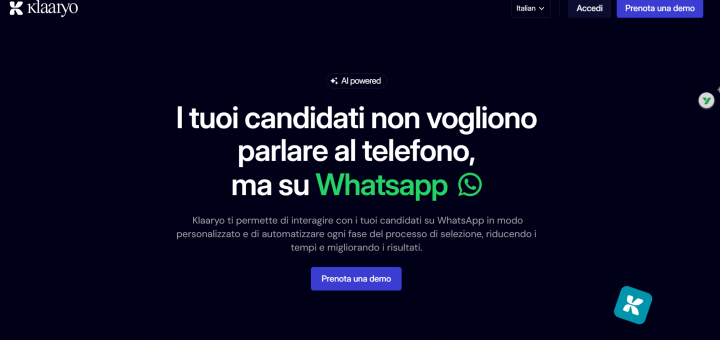
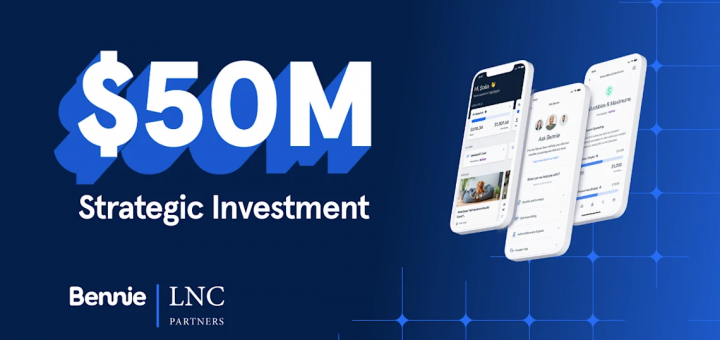
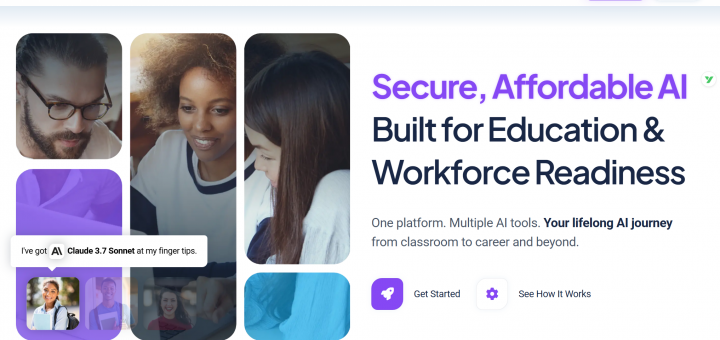

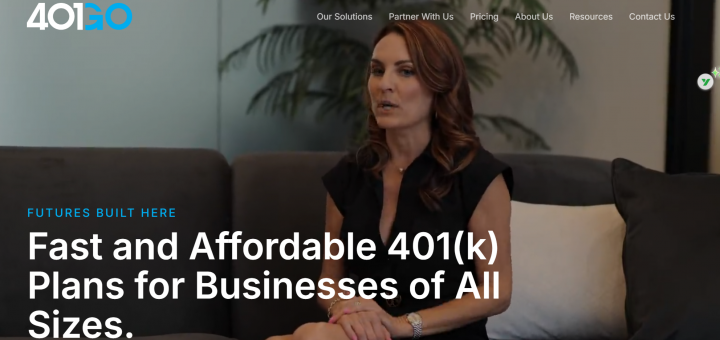
 扫一扫 加微信
hrtechchina
扫一扫 加微信
hrtechchina

